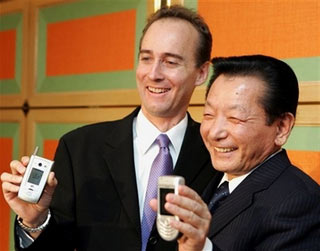Strategic Planning for Successful International Expansion
 A long-time friend of WWJ, Walter Adamson, founder and principal at Digital Investor, sat down with us to share his latest presentation, “Strategic Planning for Successful International Expansion: Lessons Learned from Asia’s Failed Experiences,” a primer on the mistakes that mobile content companies have made while trying to expand across borders, with a focus on Japan and Australia. In the Japanese case, some have succeeded, but many others have not and Walter has provided a clear outline of common mistakes.
A long-time friend of WWJ, Walter Adamson, founder and principal at Digital Investor, sat down with us to share his latest presentation, “Strategic Planning for Successful International Expansion: Lessons Learned from Asia’s Failed Experiences,” a primer on the mistakes that mobile content companies have made while trying to expand across borders, with a focus on Japan and Australia. In the Japanese case, some have succeeded, but many others have not and Walter has provided a clear outline of common mistakes.
Walter attributes failure in many cases to unsophisticated management approaches and suggests that a solution can be found from addressing what he calls the ‘Top Six Sins’ — Strategic Intent, Underestimated Risk, Lack of Linkage (between strategy and action), Poor Balance, Poor Project Reviews and Poor Alignment (between strategy and structure). WWJ thinks Walter’s view may just be valuable to mobile companies anywhere considering a leap into someone else’s market.


 Despite all the effort WWJ has put into finding and covering software developers that have successfully transitioned out of Japan’s navel-gazing mobile market to markets elsewhere, I must admit we haven’t found thousands. Or even dozens. But one of them is Shinjuku, Tokyo-based
Despite all the effort WWJ has put into finding and covering software developers that have successfully transitioned out of Japan’s navel-gazing mobile market to markets elsewhere, I must admit we haven’t found thousands. Or even dozens. But one of them is Shinjuku, Tokyo-based  For Vodafone Japan, the end came not with a bang, but with a whimper. When we arrived at last Monday’s press event – the final one, it turned out, before news of the Japan sell-out hit the Web – the smell of pending doom hung in the air. Ironically, the media briefing bore an optimistic title: the “Future Direction of Product & Service Development.” It was also surprising to see that President Bill Morrow and Chairman Tsuda-san would attend for the 3G roadmap briefing to be given by former J-Phone super-star Ohta-san; WWJ has never seen three Vodafone Big Guys in one room together for a media briefing (perhaps there is safety in numbers)? But when the talk from all three turned out vague and totally avoided any mention of new MVNO’s signing up to resell Vodafone 3G capacity — widely considered to be one of Big Red’s few viable options in Japan — we suspected something was up.
For Vodafone Japan, the end came not with a bang, but with a whimper. When we arrived at last Monday’s press event – the final one, it turned out, before news of the Japan sell-out hit the Web – the smell of pending doom hung in the air. Ironically, the media briefing bore an optimistic title: the “Future Direction of Product & Service Development.” It was also surprising to see that President Bill Morrow and Chairman Tsuda-san would attend for the 3G roadmap briefing to be given by former J-Phone super-star Ohta-san; WWJ has never seen three Vodafone Big Guys in one room together for a media briefing (perhaps there is safety in numbers)? But when the talk from all three turned out vague and totally avoided any mention of new MVNO’s signing up to resell Vodafone 3G capacity — widely considered to be one of Big Red’s few viable options in Japan — we suspected something was up. Last week’s
Last week’s  Tomi Ahonen is a smart guy who’s done a lot of observing and thinking about the 3G future. He reports that planet Earth has 2 bn mobile phones, with more phones in use than cars, credit cards or televisions, and that advertisers, businesses and governments are all trying to understand how the mobile future will download. For a glimpse into the future, Tomi was in Tokyo last month for the
Tomi Ahonen is a smart guy who’s done a lot of observing and thinking about the 3G future. He reports that planet Earth has 2 bn mobile phones, with more phones in use than cars, credit cards or televisions, and that advertisers, businesses and governments are all trying to understand how the mobile future will download. For a glimpse into the future, Tomi was in Tokyo last month for the 